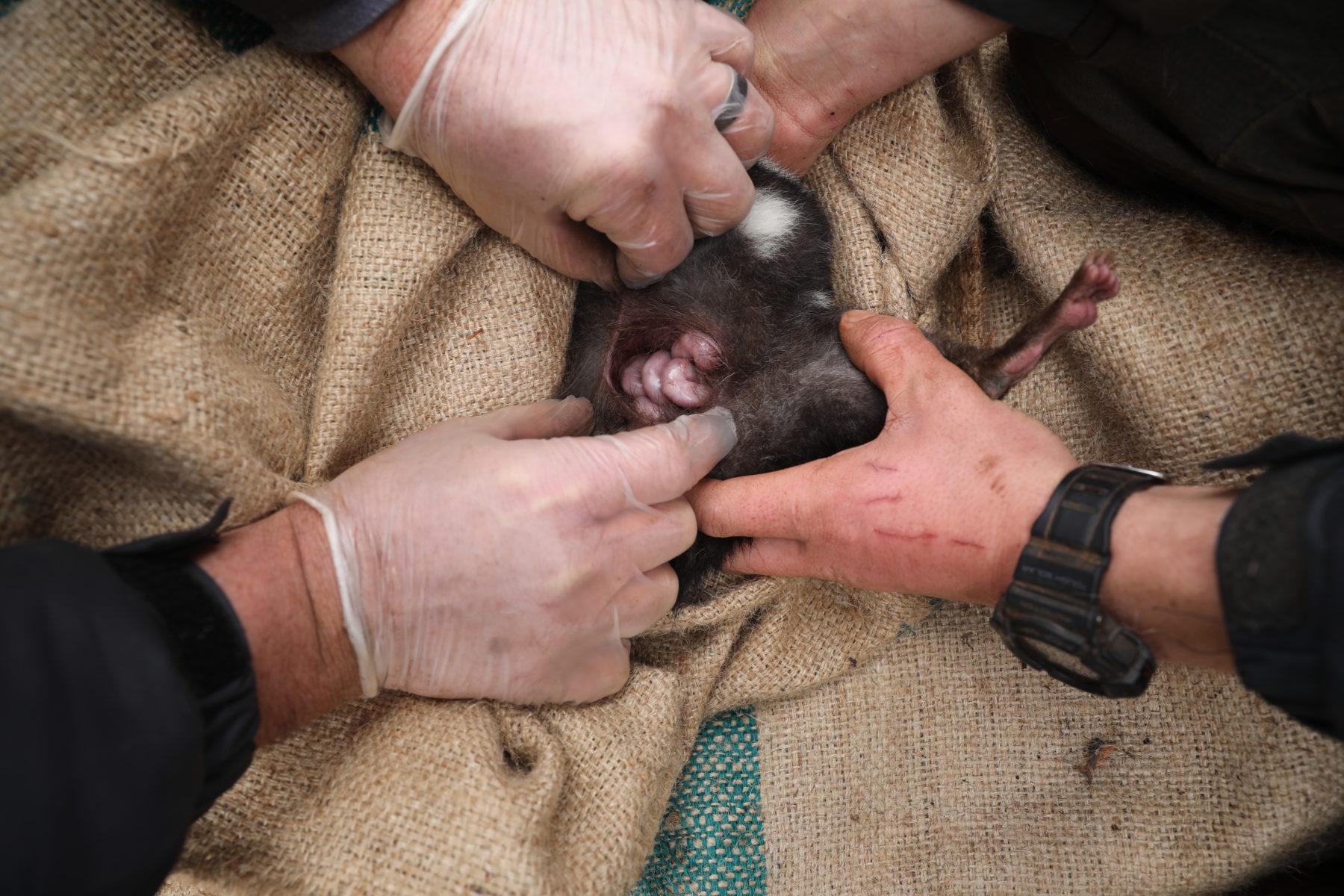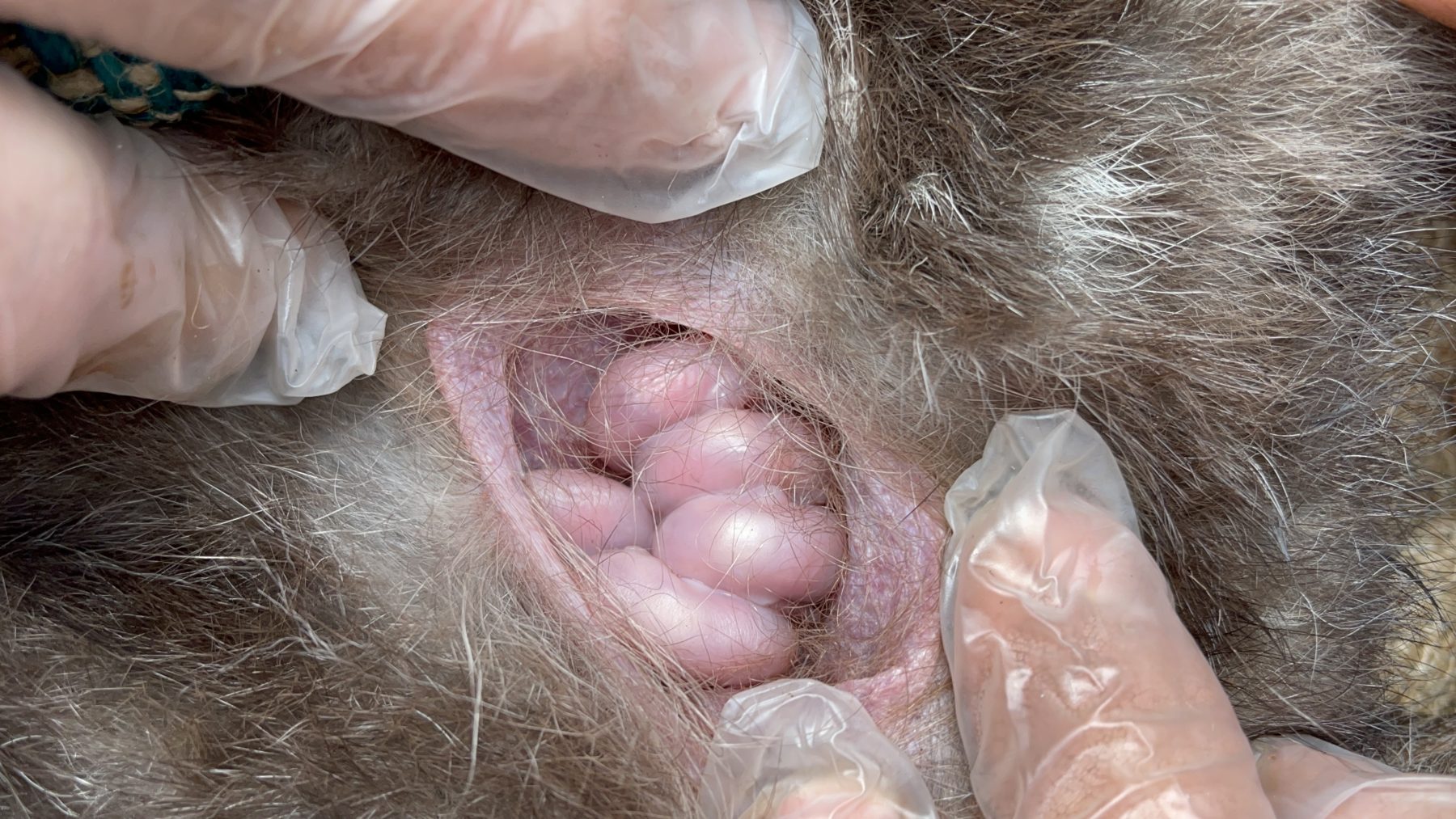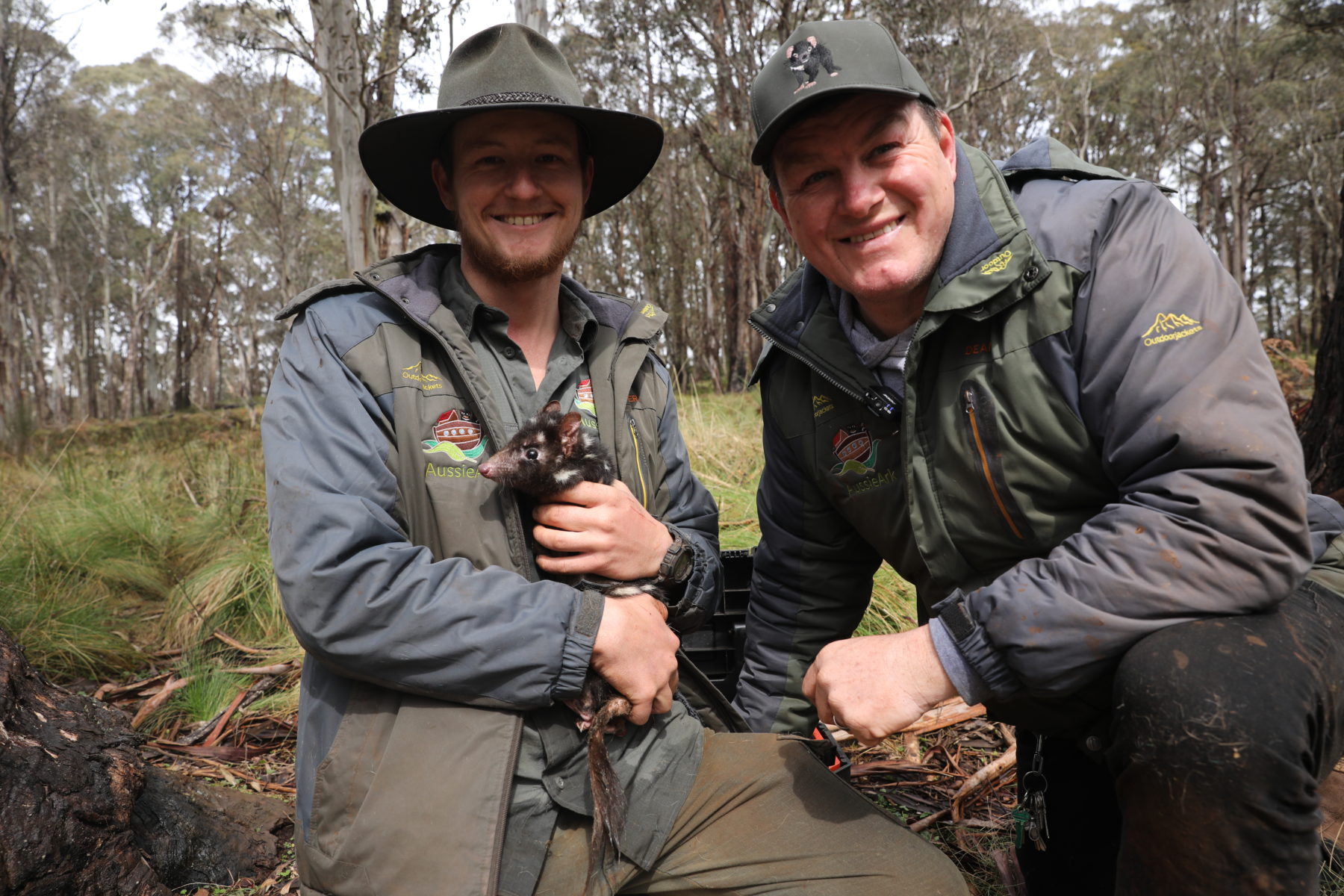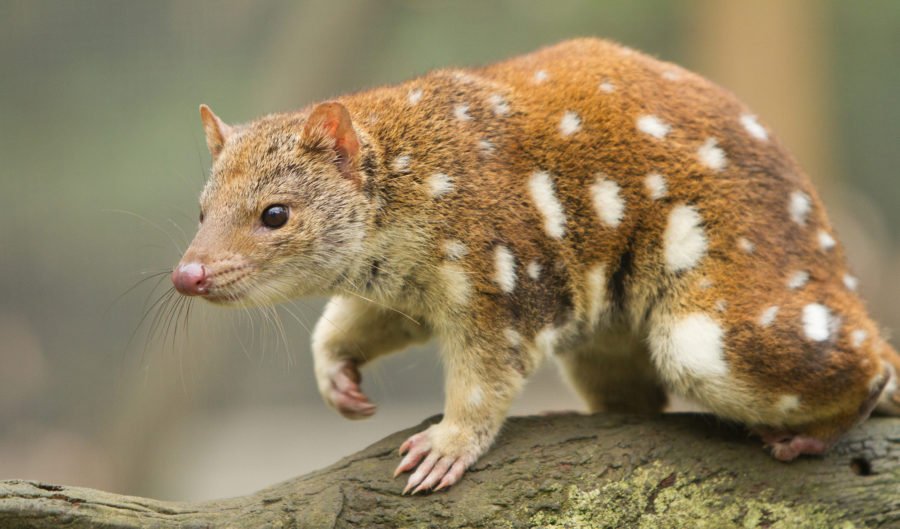Baby boom for endangered eastern quolls
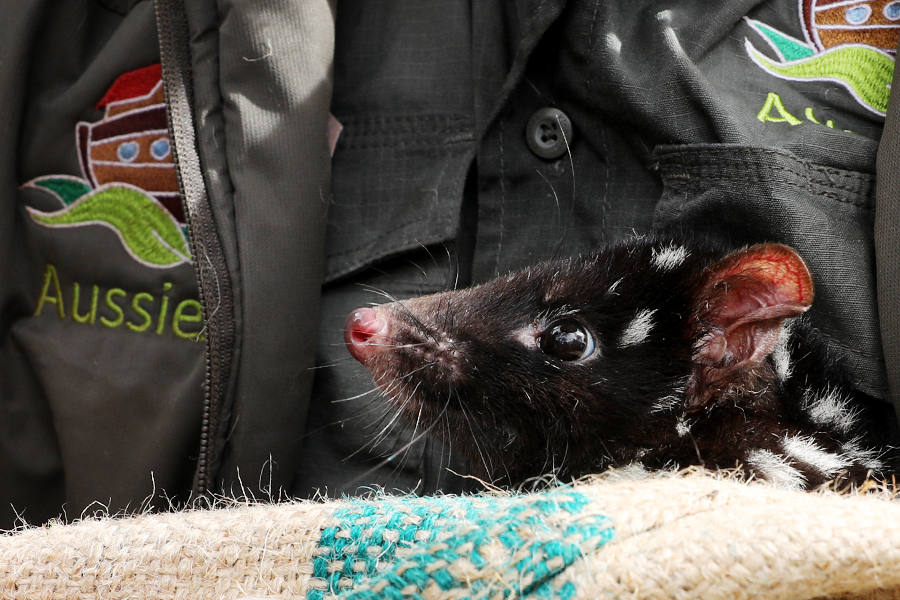
This breeding season 63 eastern quoll joeys have been born. This sets a new record for Aussie Ark, not only for the most eastern quolls to be born in one season, but it’s also the highest number of endangered marsupials ever bred by the organisation.
The joeys were counted during routine health checks by staff in the ‘wild’ environment of Barrington Wildlife Sanctuary in New South Wales.
The news follows another success for the Aussie Ark team earlier this year, when Tasmanian devil joeys were bred for the second year in a row.
These latest eastern quoll joeys are the offspring of the sanctuary’s ever-growing insurance population which had a massive boost back in May when 50 adults were added. At the time it was hoped the increased numbers would result in a bumper breeding season. Now, we know it worked.
“This quoll baby boom is truly incredible,” says Dean Reid, Aussie Ark’s operations manager.
“It’s significant not only for our organisation, but also Australia and the world.
“This is a species that continues to face complete annihilation, so this makes our successful breeding season even more significant, and special. It shows what this animal can do given the right conditions and protected environment.
“You need to remember that eastern quolls have been extinct on mainland Australia since 1967! So, the birth of these joeys feels like a modern Jurassic Park; bringing a species back from the brink, to reclaim the Australian bush.”
Aussie Ark supervisor Tyler Gralton was there when the team discovered the record number of baby quolls during routine pouch checks.
“This is what our work is all about, this is the ultimate reward for all the years of care,” says Tyler.
“To open pouch after pouch and see so many joeys is a sight I’ll never forget.”
These joeys will stay at Barrington Wildlife Sanctuary and hopefully one day join the breeding program as adults.
